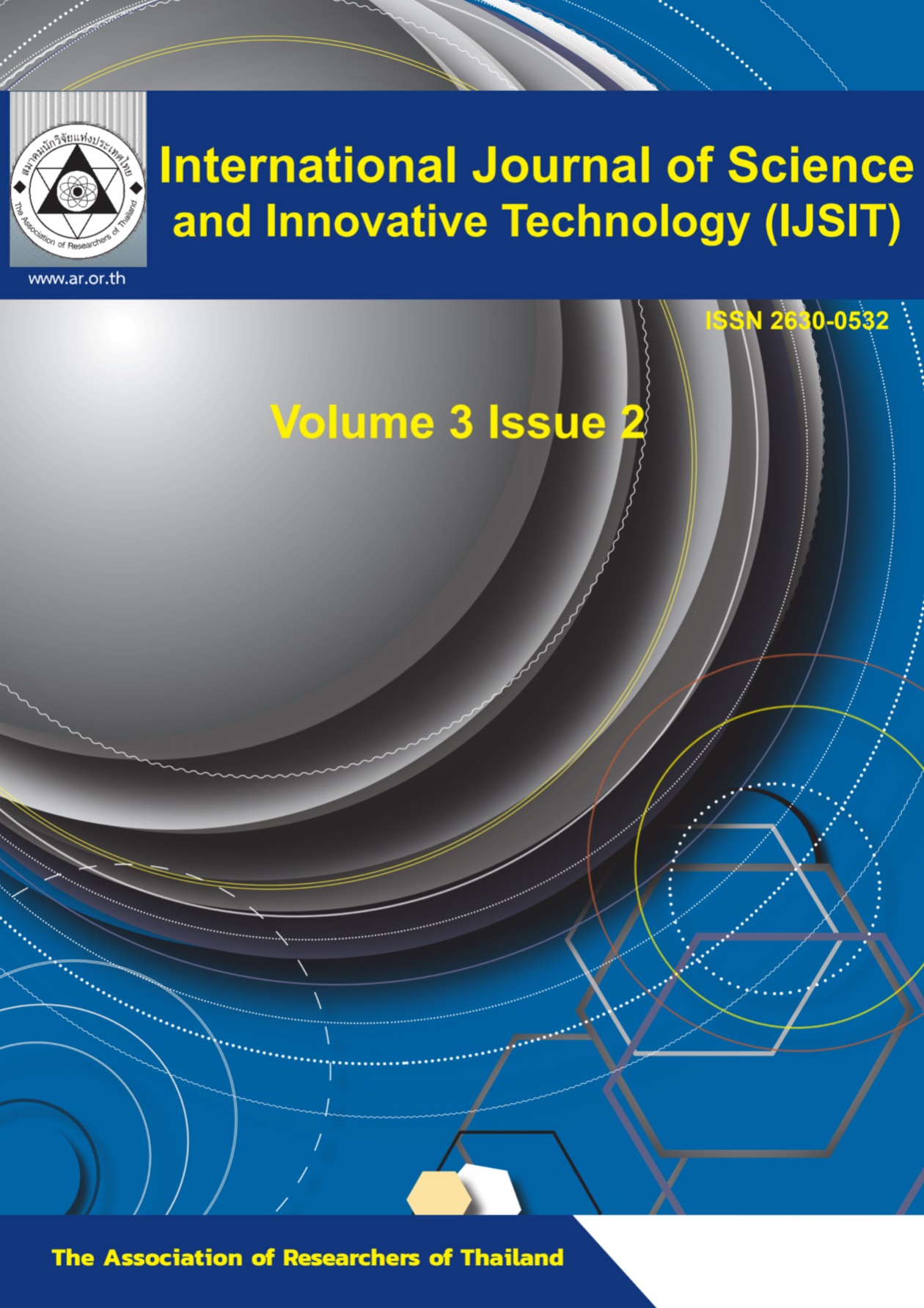Study on Growth Rate Performance of Sheep Fed with Super Napier Grass Silage Treated with Lactobacillus buchneri and Lactobacillus plantarum
Main Article Content
Abstract
This research was aimed to study the growth rateperformance of sheep fed with super Napier grass silage treated with Lactobacillus buchneri and Lactobacillus plantarum.Thirty (30) growing sheep were randomly distributed to three treatments with ten sheep serving as replications per treatment. The treatments were as follows:
Treatment 1–super Napier grass silage without inoculants (control).
Treatment 2– super Napier grass silage with L. buchneri.
Treatment 3 – super Napier grass silage with L. plantarum.
The effect on the growth rate performance of sheep were measured and analyzed by using analysis of variance in a completely randomized design (CRD).
The results revealed that super Napier grass (SNG) silages treated with inoculants had a higher levels of crude protein, crude fiber, crude fat, ash and nutrient detergent fiber compared with the untreated SNG silages. The DM fraction of the SNG treated silages was increased in contrast to the untreated where the moisture content increased. The experiment trial indicated that SNG silage treated with Lactobacillus buchneri and Lactobacillus plantarum (T2 and T3) influenced.In terms of the growth parameters, significant (P<0.01) differences were noted on body weight, weight gained, average daily gain (ADG) feed consumption and feed efficiency (FCR). The feeding trial indicated that SNG silage treated with Lactobacillus buchneri and Lactobacillus plantarum (T2 and T3) influenced sheep growth rate performance, weight gain, feed intake and days to market. Thus, addition of beneficial microbes improve the nutritional quality of silage and increased nutrients levels resulting to higher growth of sheep.
Article Details
References
Bureenok, S., Yuangklang, C., Vasupen, K., Schobewille, T.J. and Kawamoto, Y. 2012. The effects of additives in Napier grass silages on chemical composition, feed intake, nutrient digestibility and rumen fermentation. Asian-Australian J. Anim. Sci. 25 (9):1248-1254.
Cuomo, G. J., Blouin, D. C. and Beatty, J. F. 1996. Forage potential of dwarf Napier grass and a Pearl
Millet x Napier grass hybrid. Agronomy Journal. 88: 434–438.
Driehuis, F. and Wikselaar, P. G. 2000. The occurrence and prevention of ethanol fermentation in
high-dry-matter grass silage. Journal of Science of Food and Agriculture. 80:711-718.
Georing, H. K., Van Soest, P. J. 1970. Forage fiber analysis (apparatus, regents, procedures and some applications) Agriculture Handbook. United states Department of Agriculture, Washington p: 20.
Jamsawat, V., Munkaew, S. and Jamsawat, V. 2017. Effects of using applied Mission grass as roughage
for feeding dairy heifer. Rajamangala University of Technology Tawan-ok Research Journal.
(2):139-144.
Khaini, K.T., Lohi, T.C., Ghizan, S., Halim, R.A. and Samsudin, A.A. 2015. Feed intake, growth performance and digestibility in goats fed whole corn plant silage and Napier grass. Malaysia J. Anim. Sci. 18(1):87-98.
Kiyothong, K. 2014. Miracle grass seen to boost local dairy production. www.pinoyfeeds.com /Super-napier.html
Kung, L. Jr. and Ranjit, N. K. 2001. The effect of lactobacillus buchnery and other additives on the fermentation and aerobic stability of barley silages. J. Dairy Sci. 84 (5):1149-1155.
Kung, L. Jr. and Shaver, R. 2001. Interpretation and use of silage fermentation analysis reports. Focus on forage. 3(13):1-5.
Muck, R. E. 1993. The role of silage additives in making high quality silage, in silage production from seed to animal. Northeast Regional Agric. Engng. Service, NRAES-67, Syracuse, NY, pp: 106-116.
Spoelstra, S.F. 1992. Chemical and biological additives in forage conservation (1991). Food and Agriculture Organization of the United Nations 123:48-70.
Tessema, Z. K., Mihret, J. and Solomon, M. 2010. Effect of defoliation frequency and cutting height on
growth, dry matter yield and nutritive value of Napier grass (Pennisetum purpureum (L. Schumach).
Grass and Forage Science. 65:421-430.
Uchida, I.A., Freeman, V.C. and Basrur, P.K. 1986. The fragile X in Cattle. Am.J.Med.Genet.
(1-2):557-562
Van Soest, P. J. 1994. Nutrition ecology of the ruminant. 2nd Edition, Cornell University Press, Itaca, 476 p.
Weinberg, Z.G. 2013. Effect of lactic acid bacteria on animal performance. Indian Journal of Biotechnology. 2:378-381.
Wiese, S. C., White, C.L., Masters, D.G, Milton, J.T.B. and Davidson, R.H. 2013. Growth and carcass characteristics of prime lambs fed diets containing urea, lupins or canola meal as a crude protein source. Aust. J. Exp. Agr. 43(10):1193-1197.


